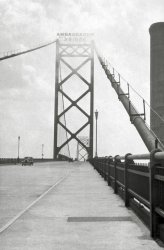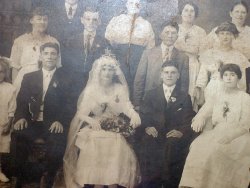
MAY CONTAIN NUTS

Search Shorpy
SHORPY ART

Framed or unframed, desk size to sofa size, printed by us in Arizona and Alabama since 2007. Explore now.
Join and Share
Ad-Free Shorpy
Shorpy is funded by you. Patreon contributors get an ad-free experience.
Learn more.

Recent comments
- Air Quality?
- Sojourner Truth riot
- None were so blind(ed)
- The less famous sister
- Good ol' days?
- Rise and Fall
- Goo Goo Ga Joob
- Ticket Retention
- Not the only one
- Vagaries of War
- Killed by Amtrak
- Back to the Future
- Wanted --
- If you can't stand the light
- Centralized Traffic Control, I believe
- What's really happening
- Heckuva remote control!
- Sometimes — Things Go Bump!
- I SEE THE LIGHT
- Union Switch and Signal Company
- Get That Light Out Of My Eyes
- Eggs. Eggs. Eggs. The Egg Man is Here!
- Foreboding caption
- Famous Hollywood faces
- Not just S&P
- re: Those things in the jar
- Up In Smoke
- Medical Smoking
- Quick fix
- A Quink Comment
Member Photos
The Shorpy
Print Emporium
Print Emporium
Search Shorpy
Search results -- 30 results per page
- All a Board: 1899
- ... to NE Minnesota, the northern half of Wisconsin, and Michigan's UP. River junction towns like Minneapolis, Stillwater, and Winona ... Posted by Dave - 05/09/2016 - 5:12pm -
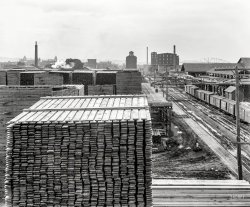
- Native Handicrafts: 1905
- Mackinac Island, Michigan, circa 1905. "Indian basket market." 8x10 inch dry plate glass ... Posted by Dave - 02/29/2012 - 3:01pm -
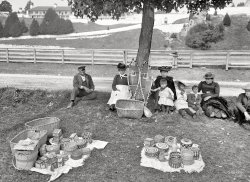
- Stone Depot: 1901
- Circa 1901. "Michigan Central R.R. station at Ann Arbor." 8x10 inch dry plate glass ... Posted by Dave - 10/28/2018 - 4:38pm -
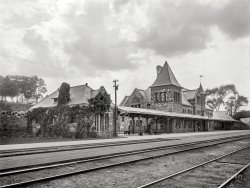
- Grandma's Wedding
- ... original is in a frame in poor shape in my aunt's house in Michigan. This picture came to me by way of a digital camera photo copied to ... Posted by itzykitty - 09/22/2011 - 11:36pm -
- Sell Street Boxers
- Circa mid-1930s in then rural Commerce Township, Michigan.
This is a photo of my uncle and father probably taken at the ... had them living in a tent for the summer in northern Michigan. They eventually ended up buying land and building their own houses. ... Posted by Ray D. O-Czech - 03/26/2020 - 1:57pm -
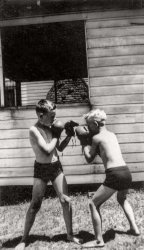
- Boardwalk Rollers: 1905
- Atlantic City circa 1905. "The Shelburne, Michigan Avenue at Boardwalk." 8x10 inch dry plate glass negative, Detroit ... Posted by Dave - 03/22/2017 - 11:58am -
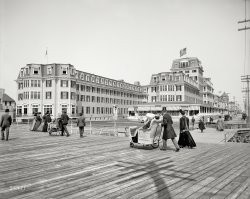
- Western States: 1910
- ... City of Mackinac ." Built in 1902 and 1893 in Wyandotte, Michigan. View full size.
Automotive Back Formation? Er . . . uh . ... Posted by Dave - 07/23/2019 - 10:49am -
![Western States: 1910 Circa 1910. "Detroit & Cleveland Navigation Line steamboats Western States and City of Mackinac." Built in 1902 and 1893 in Wyandotte, Michigan. View full size.
Automotive Back Formation?Er . . . uh . . . not to get too esoteric here, but devices intended to protect hulls from dock abrasion, etc., are properly called fenders, not bumpers.
OARS?Hanging down? Ok, so I know that they are not, but what are they?
[Bumpers. Fenders! - Dave]
[Ha! as an English transplant, you had it right the first time. Also, do they store the luggage in the BOOT? :)]](https://www.shorpy.com/files/images/SHORPY-4a25770a.thumbnail.jpg)
- Maccabees Temple: 1905
- Port Huron, Michigan, circa 1905. "Maccabees Temple." Lodge of the fraternal order Knights ... Posted by Dave - 08/05/2012 - 3:11pm -
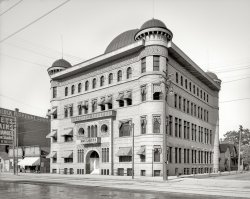
- South Weadock: 1908
- Saginaw, Michigan, circa 1908. "Houses on South Weadock Avenue." 8x10 inch dry plate ... Posted by Dave - 12/28/2018 - 3:13pm -
![South Weadock: 1908 Saginaw, Michigan, circa 1908. "Houses on South Weadock Avenue." 8x10 inch dry plate glass negative, Detroit Publishing Company. View full size.
A lot has changed in 106 yearsAt least if this 2014 Streetview image is correct:
Everystreet USAIn 1908 my grandmothers were old enough to baby sit for the three children shown.
Not Parking Meter PolesPretty sure the numerous poles along the street are hitching posts, still seeing plenty of use even in the early auto age.
[As in many of these photos, the hitching posts are accompanied by mounting blocks. - Dave]
(The Gallery, DPC, Kids)](https://www.shorpy.com/files/images/SHORPY-4a22450a.thumbnail.jpg)
- Immigrant Children Meet Santa
- ... concerned expression. Taken in 1959 at the Ford Rotunda, Detroit, MI. View full size.
Bucky Fuller and the Rotunda Many a ... Ford Fairlane Station Wagon in the interior shot reads, "MICHIGAN leads the nation in the number of state parks and prepared campsites ... Posted by UpNorthBob - 07/27/2012 - 9:36pm -

- Laddies Who Launch: 1913
- ... part of the “Corn Belt Fleet,” operating only on Lake Michigan. Along with the USS Sable, the only Navy carriers to use coal for ... Posted by Dave - 05/09/2019 - 1:32pm -
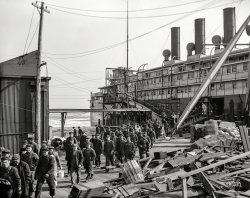
- U. Hall: 1900
- Circa 1900. "University Hall, University of Michigan, Ann Arbor." 8x10 inch dry plate glass negative, Detroit Publishing ... Posted by Dave - 03/06/2015 - 2:06pm -
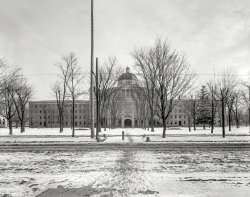
- Heavy Lifter: 1906
- Calumet, Michigan, circa 1906. "Copper mining. Hoisting engine, Tamarack No. 5 Shaft." ... Posted by Dave - 05/25/2019 - 1:46pm -
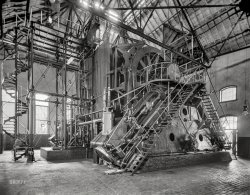
- Langell Boys: 1908
- ... "Lumber hooker Langell Boys unloading at Saginaw, Michigan." 8x10 inch dry plate glass negative, Detroit Publishing Company. ... Posted by Dave - 12/28/2018 - 11:29am -
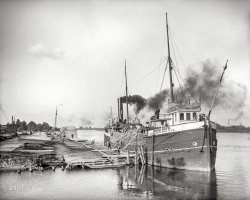
- Family Cow: 1901
- ... Circa 1901. "Family cow -- The Firs, New Baltimore, Michigan." 8x10 inch dry plate glass negative, Detroit Publishing Company. ... Posted by Dave - 08/24/2017 - 3:08pm -
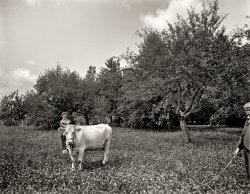
- Stove-Cam: 1901
- Chelsea, Michigan, circa 1901. "Glazier Stove Company, general view." In the four years ... Posted by Dave - 04/28/2014 - 11:06am -
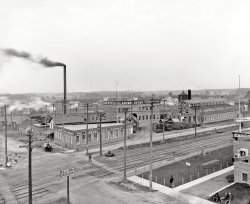
- Glazier Stove: 1901
- Chelsea, Michigan, circa 1901. "Glazier Stove Company, the foundry." 8x10 inch dry plate ... Posted by Dave - 10/20/2012 - 10:49am -
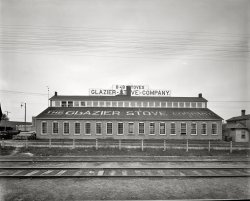
- Oyster Steamer: 1908
- ... compounds were made through the 1950's, in fact, the Lake Michigan carferry "Badger" has two still in operation.
(The Gallery, Boats ... Posted by Dave - 11/23/2012 - 7:45pm -
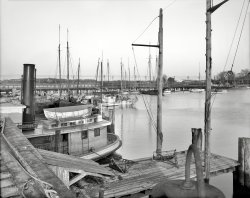
- Howard Furniture: 1905
- Port Huron, Michigan, circa 1905. "Armory (Charles Baer Bldg.) and Maccabees Temple." 8x10 ... Posted by Dave - 11/06/2017 - 10:37pm -
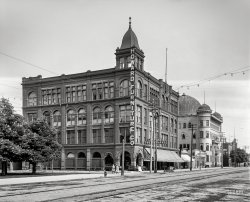
- Municipal Marquette: 1906
- Marquette, Michigan, circa 1906. "Post office and City Hall." 8x10 inch dry plate glass ... Posted by Dave - 05/29/2020 - 11:55am -
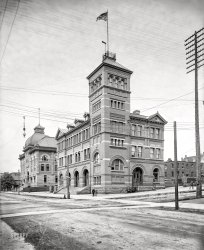
- Chez Alma: 1905
- Alma, Michigan, circa 1905. "Alma Sanitarium dining room." 8x10 inch dry plate glass ... Posted by Dave - 08/02/2012 - 9:54pm -
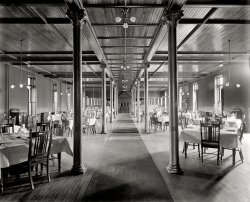
- Model T Plant: c. 1920s
- ... at the Highland Park Model T Plant, Highland Park, Michigan. Experts tell me that the photo most likely dates from the ... Posted by OldDetroit - 03/22/2011 - 7:35am -
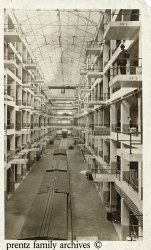
- Go With the Flow: 1906
- Harbor Springs, Michigan, circa 1906. "A flowing well in Wequetonsing." 8x10 inch dry plate ... Posted by Dave - 07/27/2017 - 8:49am -
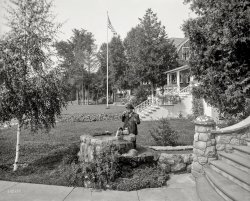
- Lots of Pulp (Colorized): 1908
- Circa 1908. " Paper mills at Petoskey , Michigan." 8x10 inch dry plate glass negative, Detroit Publishing Company. ... Posted by DonW - 10/14/2011 - 8:33am -
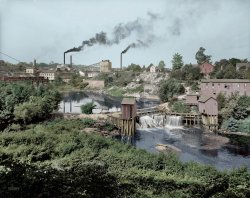
- Iron Horse: 1905
- Ecorse, Michigan, circa 1905. "Gantry crane, Great Lakes Engineering Works." 8x10 inch ... Posted by Dave - 10/12/2018 - 3:22pm -
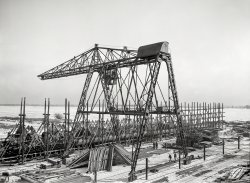
- Another Mystery Car
- ... this in the late 1930's either in Detroit or Dearborn, Michigan. I think the guy is my dad's cousin. No idea what kind of car. ... Posted by mackinaw - 10/24/2014 - 6:47pm -
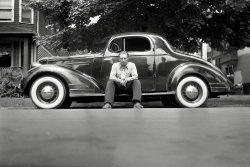
- He's Got the Whole World: 1956
- ... The tube radio was tuned to 1130 AM, WCAR in Pontiac, Michigan. Also visible on the dial are the Conelrad (Civil Defense) stations, ... at noon we heard the air raid sirens being tested in Detroit, just across the river. The red opaque plastic glowed warmly in the ... Posted by Angus J - 10/26/2011 - 4:08pm -

- Industrial Strength: 1901
- ... The embankment in the background is the Lake Shore & Michigan Southern, later New York Central, Penn Central, Conrail, now Norfolk ... Posted by Dave - 05/28/2019 - 7:29pm -
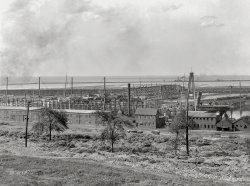
- Sew and Save
- ... the Lendzion's 5 and 10 store that he managed in Hamtramck Michigan. (Detroit).
(ShorpyBlog, Member Gallery) ... Posted by KAP - 04/19/2013 - 7:30pm -
![Sew and Save One of my great uncle's F.W. Woolworth displays from the 1930's, probably in Findlay Ohio. He and my great aunt would work into the night building these displays and then take pictures of the final product. This one shows the benefits of sewing it yourself. He even covered the pole in aluminum foil. View full size.
[This appears to be 1952, the year National Sew and Save Week was held Feb. 23 to March 1; that's also consistent with the early-50s fashion styles in the illustrations. -tterrace]
Lendzion's of HamtramckThanks to tterrace for the correction on the date. If this was the 50's, then it was the Lendzion's 5 and 10 store that he managed in Hamtramck Michigan. (Detroit).
(ShorpyBlog, Member Gallery)](https://www.shorpy.com/files/images/Norwalk324a.thumbnail.jpg)
- Ambassador Bridge
- ... Early picture of the Ambassador Bridge that links Detroit Michigan and Windsor Ontario. Bridge was built in 1929 and this looks like it ... Posted by mhallack - 10/05/2013 - 9:24am -
